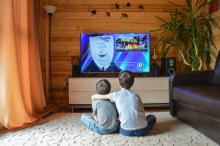While the Motion Picture Association’s ratings include a smoking label with film ratings for some movies, according to the 2019 Smoking in the Movies report from the Centers for Disease Control and Prevention, 87% of top-grossing, youth-rated films with smoking do not include such labels. Indeed, R-ratings are not required for films with tobacco use imagery despite the well-established relationship between onscreen tobacco imagery and youth smoking (US Surgeon General, 2014). Similarly, tobacco imagery is not taken into account in designating maturity ratings for the Television Oversight Monitoring Board’s (TVOMB) TV Parental Guidelines rating system, despite the fact that tobacco imagery has increased substantially in television programming in recent years (truth initiative, 2019).
A recent article, Tobacco and the Small Screen: Why the TVOMB Should Restructure the Parental Guidelines, by Leavitt (2021) suggests that the TV Parental Guidelines ratings system suffers from limitations of being challenging for parents to understand while not adequately protecting youth from tobacco imagery in programming. Leavitt’s article outlines some potential solutions for improving the limitations of the TV Parental Guidelines.
First, Leavitt suggests that additional research needs to be conducted to determine 1) how well parents understand the TV Parental Guidelines ratings, and 2) whether parents know the appropriate procedures for filing complaints about inaccurate ratings. These steps will help provide a better assessment of the accuracy and efficacy of the rating system.
Second, Leavitt suggests that the TVOMB Board make their meeting content public and include an adequate number of non-television Industry members on the Board to provide more representation of consumer interests in the Board’s decisions.
Leavitt’s third suggested solution for improving the TV Parental Guidelines ratings system included recommendations for limiting youth exposure to tobacco imagery, which came from the truth initiative’s 2019 While You Were Streaming report and UCSF’s 2020 What is Hollywood Hiding? How the Entertainment Industry Downplays the Danger to Kids from Smoking on Screen report from Polansky and Glantz. Key recommendations included 1) giving mature ratings to programming with tobacco imagery (truth initiative and UCSF), 2) providing easy-to-understand warnings about tobacco imagery prior to the start of programming (UCSF), and 3) encouraging streaming companies to develop a straightforward, uniform interface for parental controls that allows parents to block programming with tobacco imagery (UCSF).
Implementing the recommended solutions that Leavitt cites will help to improve the TV Parental Guidelines, making them easier for parents to understand, more attuned to consumer interests, and more focused on adequately protecting children from tobacco imagery in television programming. These solutions all have the benefit of not requiring government action from Congress or the Federal Communications Commission.
